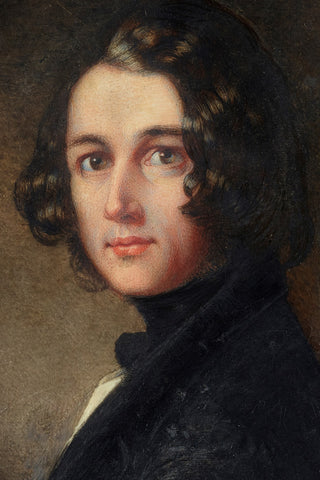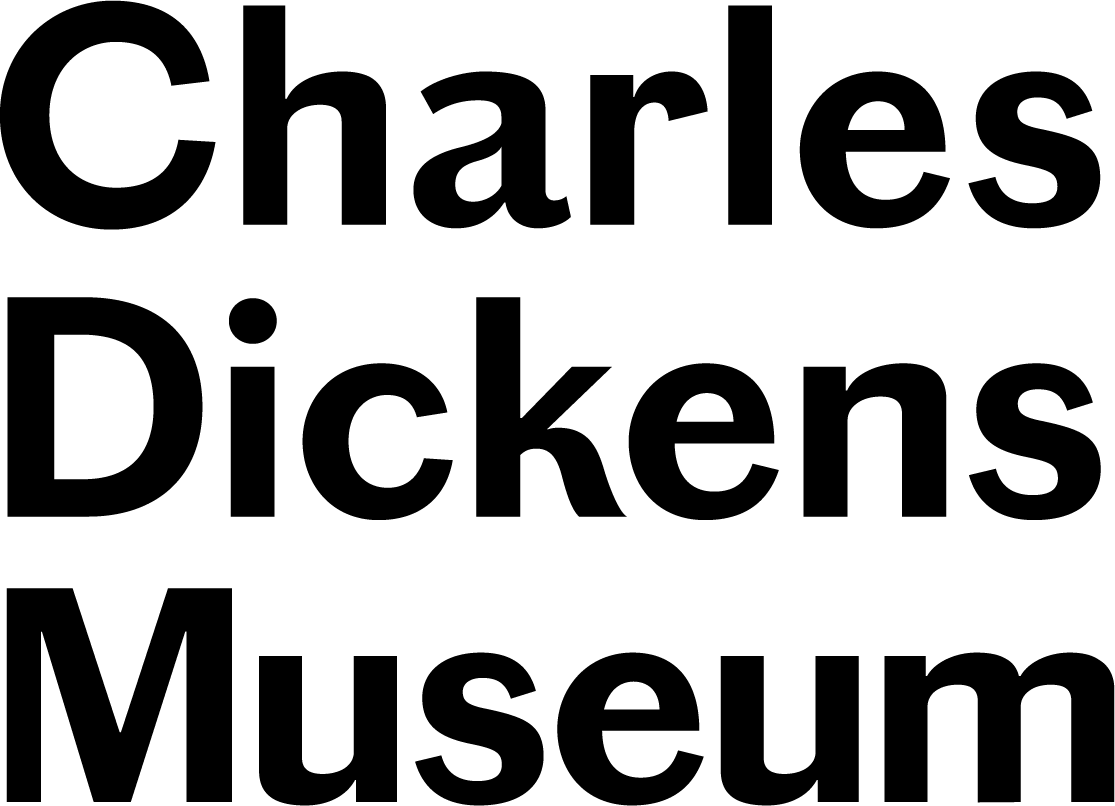The Lost Portrait
The lost portrait of Charles Dickens as an emerging literary star at the age of 31, officially lost for over 130 years, has miraculously turned up in a box of trinkets in South Africa. Painted in late 1843 by Margaret Gillies (1803–1887) during the same weeks Dickens was writing A Christmas Carol, it was last seen in public in 1844 when exhibited at the Royal Academy of Arts in London. The portrait has now returned to the UK in time for the 175th anniversary of Dickens’ Christmas masterpiece, first mentioned by the author in a letter dated to a day he was sitting for Gillies.
Art dealers Philip Mould & Company, formally re-identified the portrait and it is now on display in an exhibition, Charles Dickens: The Lost Portrait, running until noon on Friday 25 January 2019 at the Philip Mould Gallery.
Until now the portrait has been known only by a simplified black-and-white print, which has none of the brilliance of the original and was the frontispiece of a book entitled A New Spirit of the Age (1844). Edited by Richard Henry Horne, this collection of essays highlighted the great figures of the early Victorian period, from Alfred Tennyson and Robert Browning to Romantic stalwarts such as William Wordsworth and Mary Shelley. Dickens was the first entry.
Despite attempts to locate the portrait during her lifetime, even Gillies herself was at a loss to know what had happened to it, reporting it unaccounted for in 1886. Dickens’ contemporary, the poet Elizabeth Barrett Browning, had seen the original and remarked that it showed him as having ‘the dust and mud of humanity about him, notwithstanding those eagle eyes.’ When it was rediscovered a layer of mould was obscuring part of Dickens’ body. It has now undergone conservation work which reveals the stunning detail beneath.
Support the Charles Dickens Museum Lost Portrait Appeal
In order to avoid losing the portrait once again following the end of the exhibition we are seeking to raise £180,000 to secure the Lost Portrait for the nation, bring it into the Museum's permanent collection and place it on public display.
All donations are most appreciated. Click here to see how you can make a contribution.

About the Artist
The lost portrait is also remarkable for being made by a professional woman, herself an important and overlooked artist and social campaigner. Well known as a miniaturist, Margaret Gillies painted a portrait of the poet William Wordsworth amongst others. An early supporter of women’s suffrage, she never married but co-habited with her partner, the pioneering sanitary reformer and physician Dr Thomas Southwood Smith (1788–1861). She provided the illustrations for a report by Southwood Smith for the Royal Commission of Inquiry into Children’s Employment in Mines and Manufactories (1842). These images provided a graphic and disturbing account of the exploitation of poor children in Victorian society; a radical subject for a woman artist to take up and work which Gillies executed anonymously.
Gillies shared with Dickens a passion for social reform and a deeply felt concern for those living in poverty. The sittings for the lost portrait, which started in late 1843, coincided with one of Dickens’ most intense and ground-breaking periods of social campaigning – the six weeks in which he wrote A Christmas Carol. Dickens first mentions the book in a letter dated the same day as one of his sittings. Initially intending to write a pamphlet about child poverty, he diverted to writing a short ghost story with a clear political agenda.
Connection to South Africa
It is unknown how the portrait came to be in South Africa, but research undertaken by Philip Mould & Company strongly suggests that it arrived via one of two sons of George Henry Lewes (partner to George Eliot), both of whom emigrated to South Africa in the 1860s. Both Gillies and Dickens were close to the Lewes family and Gillies’ adopted daughter was married to another of Lewes’ sons. The portrait was found at a general sale in a tray containing a number of antiques and everyday objects, including an old recorder, a brass dish and a metal lobster. Suspecting the portrait might be of note, its purchaser contacted Philip Mould & Company.
To find out more about the incredible story behind the rediscovery visit the fantastic new exhibition Charles Dickens: The Lost Portrait at the Philip Mould Gallery running until 25 January 2019. Opening hours are Monday – Friday, 09:30 – 18:00.
The Lost Portrait: A Podcast
To accompany the exhibition, Philip Mould & Company have also launched an exciting podcast, in partnership with the interactive podcast platform Entale.
The Lost Portrait is a three-part series that traces the origins of this beguiling portrait from its creation in 1843, the same time in which Dickens was writing A Christmas Carol, to its miraculous reappearance amongst bric-a-brac in a house clearance sale in Kwa-Zulu Natal, South Africa. Join Philip Mould, leading Dickens scholars, art historians and Dickens’ great-great-great-granddaughter as they explore the significance of this truly remarkable discovery.
The podcast will be available to download from the following platforms:
Entale Podcast App
Apple I-Tunes store
Stitcher
www.philipmould.com
#DickensLostPortrait

